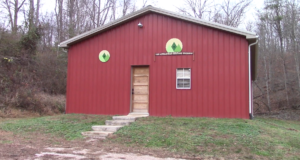Wandering Eyes – Woodworking Safely
JerillV2021-09-29T14:19:02+00:00Some men have wandering eyes but some woodworkers have them at times when safety is a concern. I have noticed some of my students looking up from the machinery they are using while continuing to use the machine. Some have jointed a board while looking off towards the door of the shop. I have even spotted a student pushing a board through the table saw while looking over towards the lathe. This is a very unsafe practice. When working with machinery you should always pay close attention to the task at hand. Only one brief second of looking away can lead to serious consequences. I tell all my students to concentrate on the task in front of them and don’t look at the student on the machine next to them. I approach a student using a tool only when the student is not in the middle of a cutting motion so I don’t startle them. Although most of the students pay very close attention to their body position when using the woodworking machines some still glance away at critical times. So be sure and pay close, visual attention to your work and take a break when you want to talk. Your hands will appreciate your eyes attention to details!
Enjoy your shop time!
Jerill











